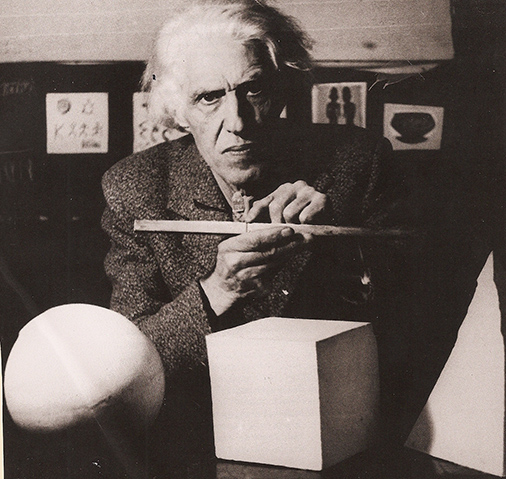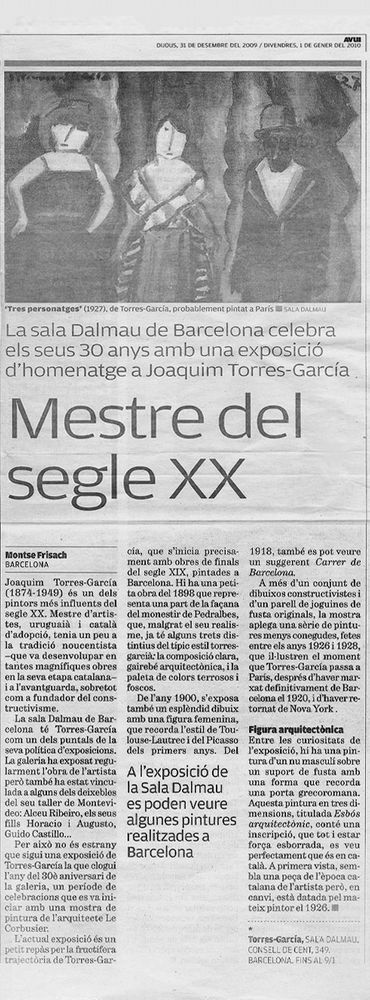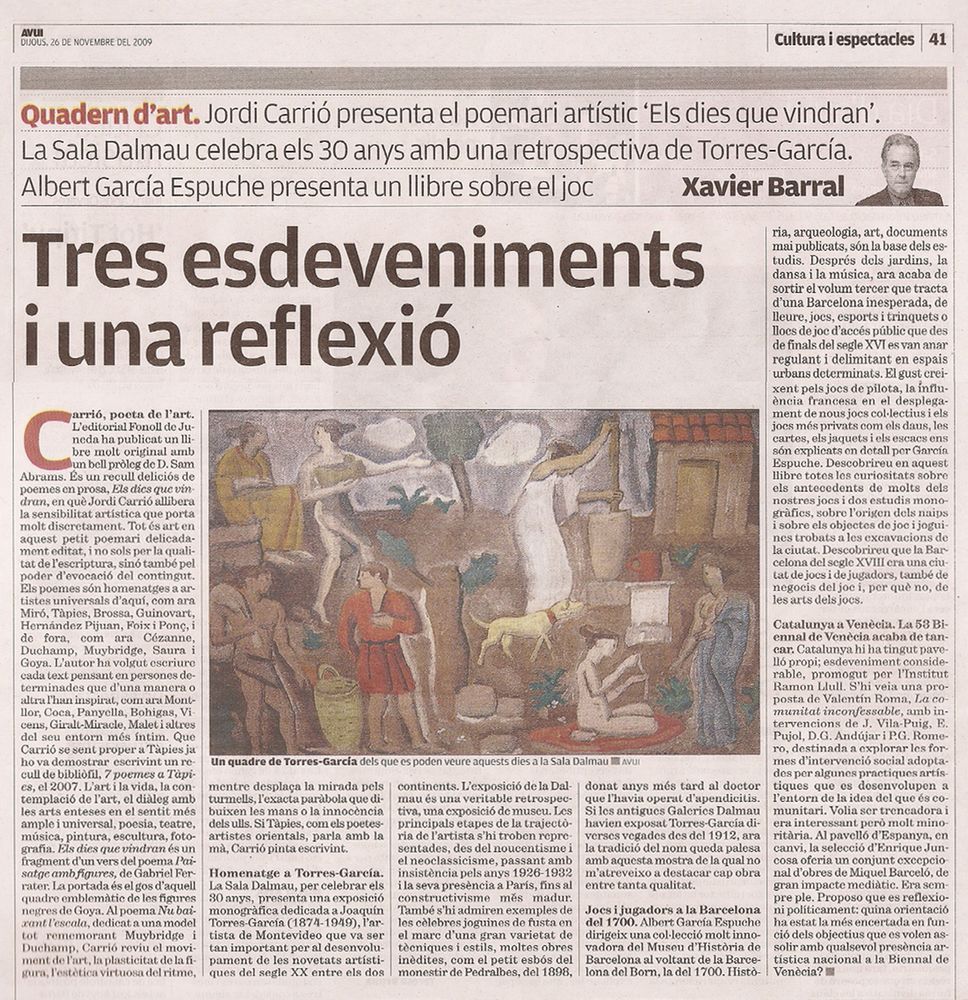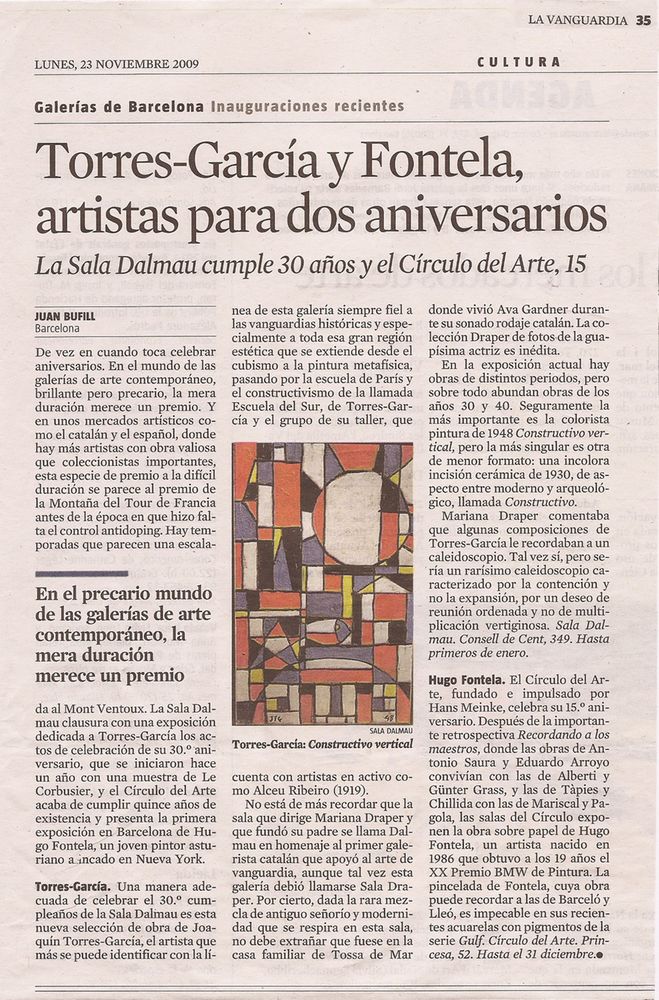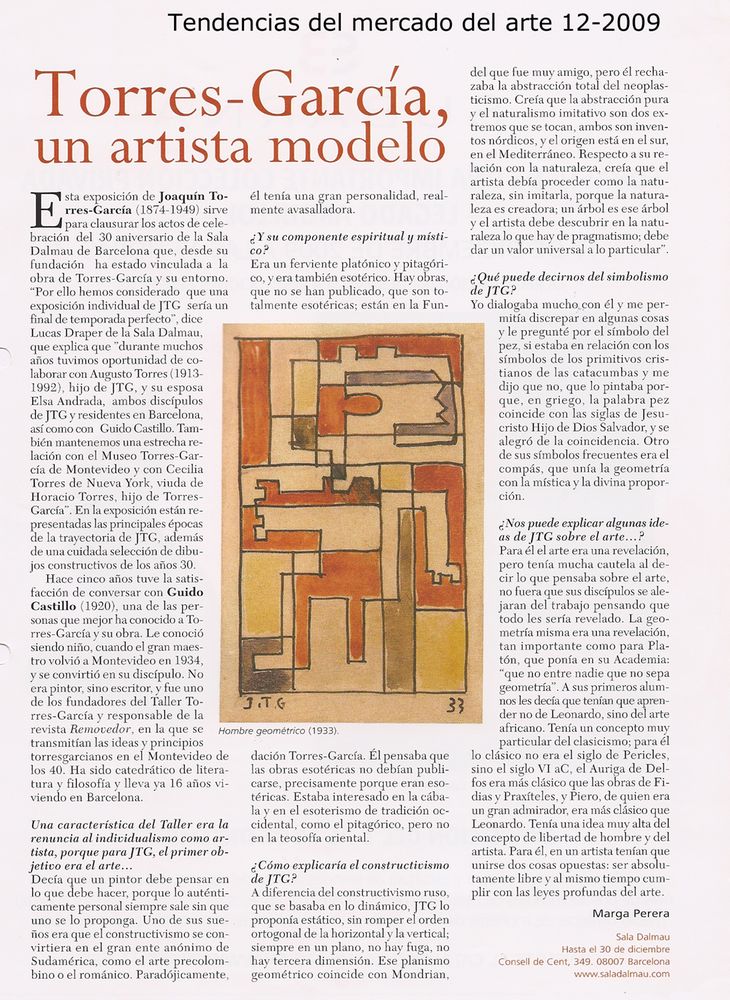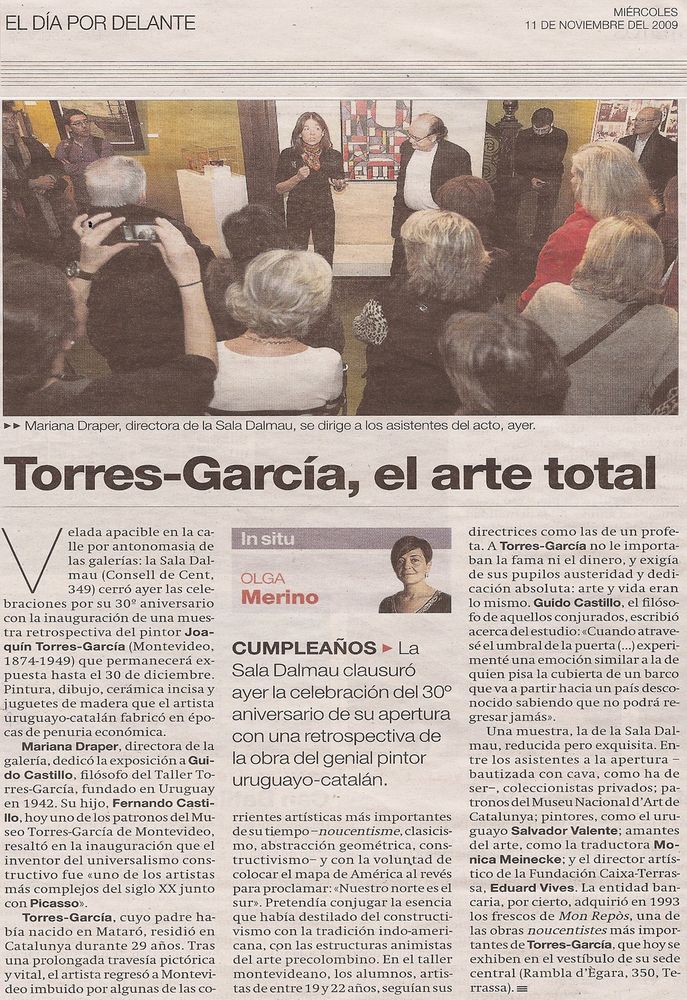Joaquín Torres-García was born in Montevideo, Uruguay, in 1874.
In 1891 the Torres-García family settles in Barcelona after a brief stay in Mataró.
Between 1904 and 1905 he collaborates with Antoni Gaudí designing windows for the Cathedral of the city of Majorca and the Sagrada Familia in Barcelona.
Young Torres-Garcia discovers the works of a Puvis de Chavannes, the Italian primitives and the Hellenic art.
In 1908 he paints murals, among other places at the Barcelona City Council. These murals have been covered or destroyed. A year later he marries Manolita Piña.
With the support of Prat de la Riba, he is selected to decorate the Sant Jordi Salon at the Palace of the Generalitat de Catalunya, but Prat de la Riba’s death in 1917 interrupts this commission.
In 1913 he begins working in his wood toys.
In 1920 he travels with his family to Paris, where Joan Miró is waiting for him. Later on he settles in New York and associates withAnderson Galleries to produce his toys. After a stay full of economic problems, Joaquin Torres-Garcia moves back to Europe. He settles in several Italian cities developing his toy label Aladdin Toys. His painting returns to the classical tradition, but this return is brief as a journey to Paris allows him to contact Jean Hélion, Edgar Varèse as well as the new avant-gardes, so he will abandon his classic inspired painting.
In 1928 he meets Theo Van Doesburg who introduced him in the De Stijl group. Later on, Seuphor will introduce him to Mondrian and other members of the neoplasticist group and he will join their social circle. From those meetings will emerge the group Cercle et Carré. He meets Braque, Lipchitz, Gris, Le Corbusier....He develops an interest in purism. Synthesizing the principles of neoplasticism and the primitive art, he paints his first constructivist works.
In 1930 founds with Michel Seuphor the magazine Cercleet Carré. Those are years of recognition from the art critics, but the economic difficulties force him to return to Spain. In 1933 he presents in Madrid the first show of the Grupo de Arte Constructivo and invites Manuel Angeles Ortiz to participate.
Joaquín Torres-García returns to Uruguay.
A year later, he embarks with his family to settle in Montevideo, where he will stay for the rest of his life. In Montevideo he will create theAsociación de Arte Constructivo (AAC) and, taking inspiration from the previousCercle et Carré, publishesCirculo y Cuadrado (until 1943).
During the late 30s he does the Monumento Cósmico at the Parque Rodó in Montevideo and begins the series Retratos de hombres famosos using the theory of the sección aurea.
His pedagogical vocation makes him open in 1942 el Taller Torres-García, where he would initiate young painters on what he called Arte Universal: el Constructivismo. The ideas of the Taller where published at the Removedor magazine, edited by Guido Castillo. This workshop will provoke a revolution in the country’s art scene and will be a huge influence on the art history of Latin America.
Joaquín Torres-García dies on the 8th of August 1949 in Montevideo.
Our gallery has always been interested in Joaquín Torres-García since our opening in 1979, featuring his work in several shows, such as his solo exhibitions in 2009 and 2015, or many group exhibitions dedicated to the avantgardes, the one shared with Barradas and Figari or the one we dedicated to his workshop.


